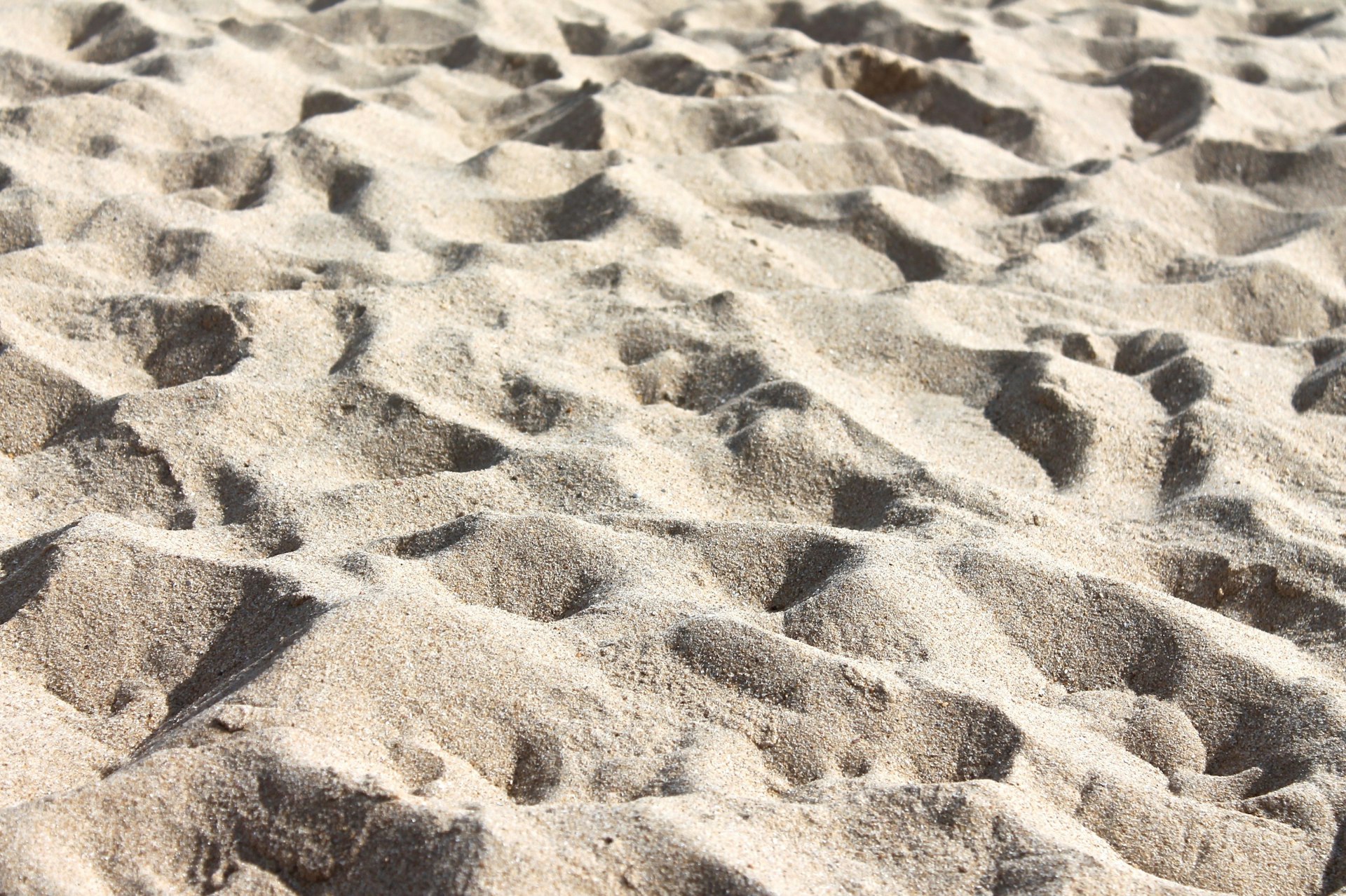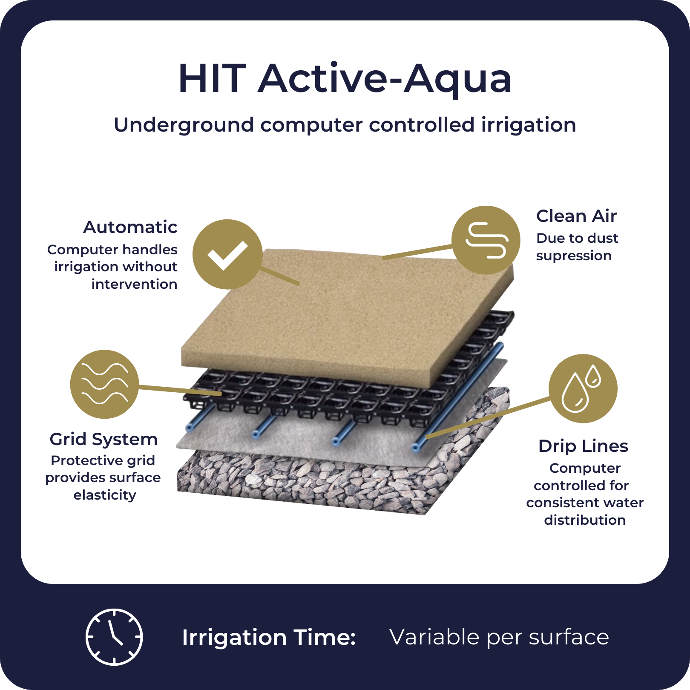The importance of moisture in riding surfaces cannot be understated...
According to the FEI Equestrian Surfaces Guide water is the single most important factor that influences the properties you want from an arena.
- Water determines the properties of sand
- Water shapes the way a surface reacts to riding activities
Moisture determines the properties of the sand, which in turn influences the functionality of the entire riding surface.
Imagine walking in the sand at the beach

Moist sand
Moisture binds the sand together making it easier to travel "over" the surface rather than "through it" because the surface supports your weight.

Dry sand
Your feet sink easily into the sand and it requires a lot more effort to maintain normal walking speed than in moist sand.
What does moisture do to sand based riding surfaces?
When dry, sand is simply a collection of particles held together by friction. But once moisture seeps in, a fascinating transformation occurs. Depending on the type and size of the grains, water infiltrates the pores, creating adhesion between the particles. The adhesion means that the sand becomes firmer, able to support more weight and absorb impact.
How does water impact riding activities?
(This answer is reinforced by the following: White Paper on Equine Arena Surface Assessment)
Moisture content stands out as a crucial physical parameter to measure, as it significantly impacts the functional characteristics of a surface (Goodall et al., 2005; Peterson et al., 2008).
Research suggests that increased moisture content enhances particle adhesion, improves shear resistance and stability (Ratzlaff et al., 1997; Chateau et al., 2010; Murray et al., 2010a).
Optimal moisture is dependant on surface type and sport
However, once saturation occurs, there is a drop in shear strength. Typically, sand reaches its maximum shear strength between 8% and 17% moisture content (Barrey et al., 1991; Ratzlaff et al., 1997).
Optimal moisture levels vary depending on surface type and sport. For instance, gaining maximum shear strength may not be ideal for actions like the spin in reining horses, as it could increase limb loading by reducing hoof rotation ability, necessitating a slightly drier surface to mitigate injury risks.
Studies show that low and high moisture contents result in higher peak forces on a sand surface, compared to a moderate moisture content. The higher peak forces are likely due to the formation of a hard base layer where the hoof penetrates to the base (Ratzlaff et al., 1997). Therefore consistent moisture management is very important to every sport.
Changes is surface hardness are linked to moisture and compaction
Even a slight variation in moisture content can significantly impact peak vertical deceleration during the stance phase (Chateau et al., 2010). Research shows that surface hardness is a result of low moisture content and therefore an increase in compaction.
More awareness and understanding of moisture effects to riding surfaces is needed
Understand your sand! Factors influencing sensitivity to moisture content encompass particle size, resulting pore sizes, and sand type, which can affect surface chemistry and water attraction to sand particles. Ultimately our riding experience and future with horses is somewhat dependant on providing the optimal riding surfaces.
Interested in riding surface irrigation?
Our solution: HIT Active Aqua
Underground riding surface irrigation with computer control
